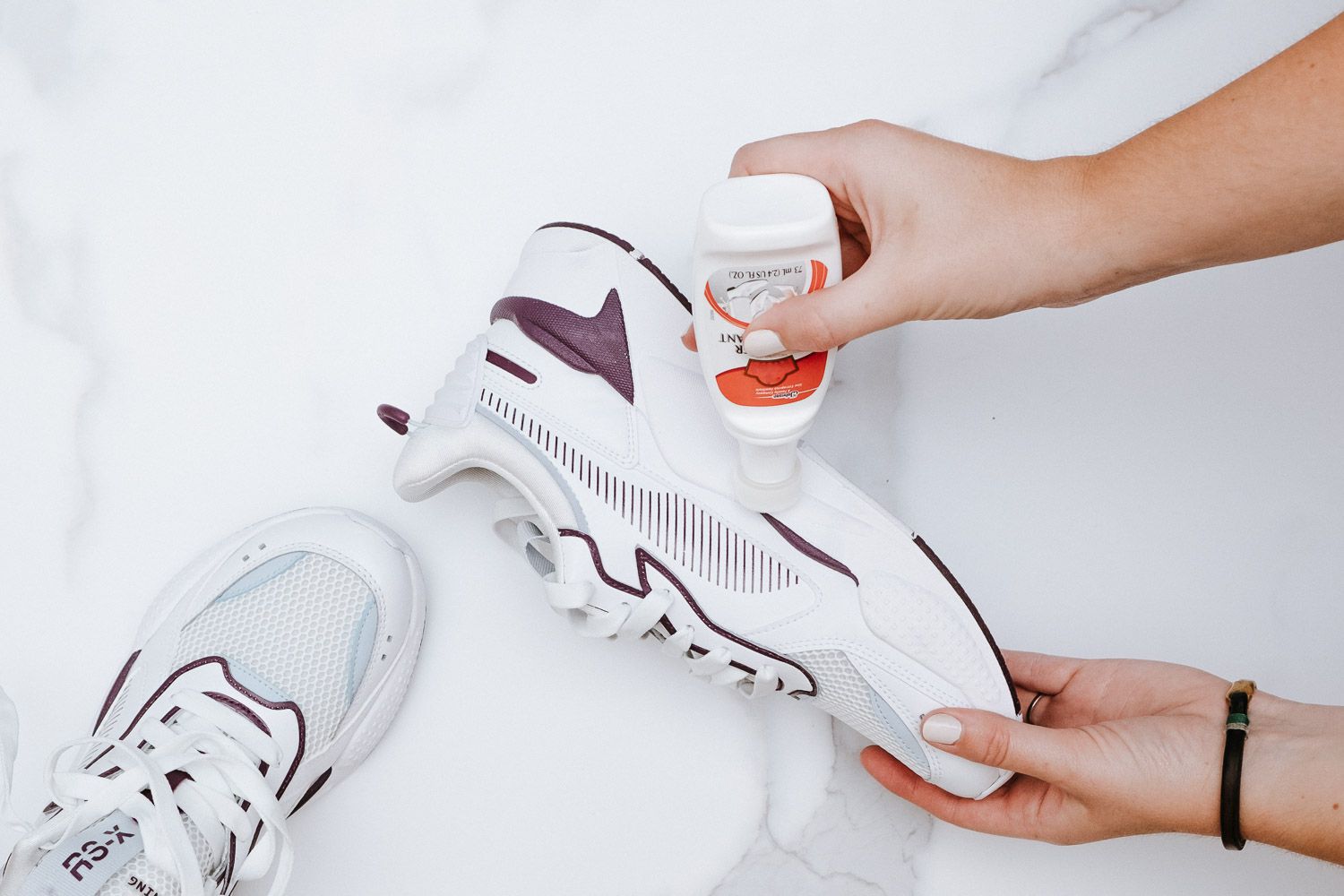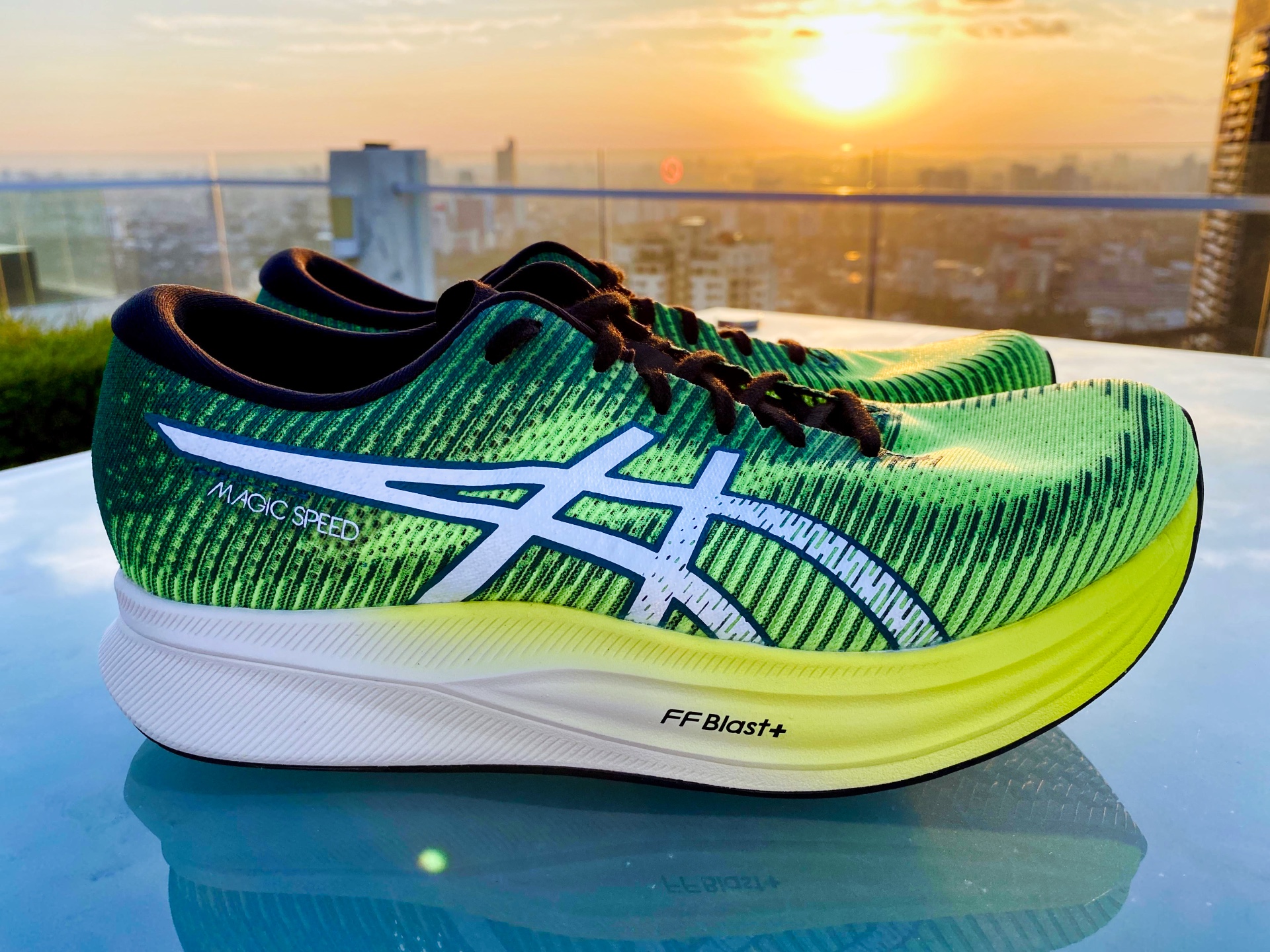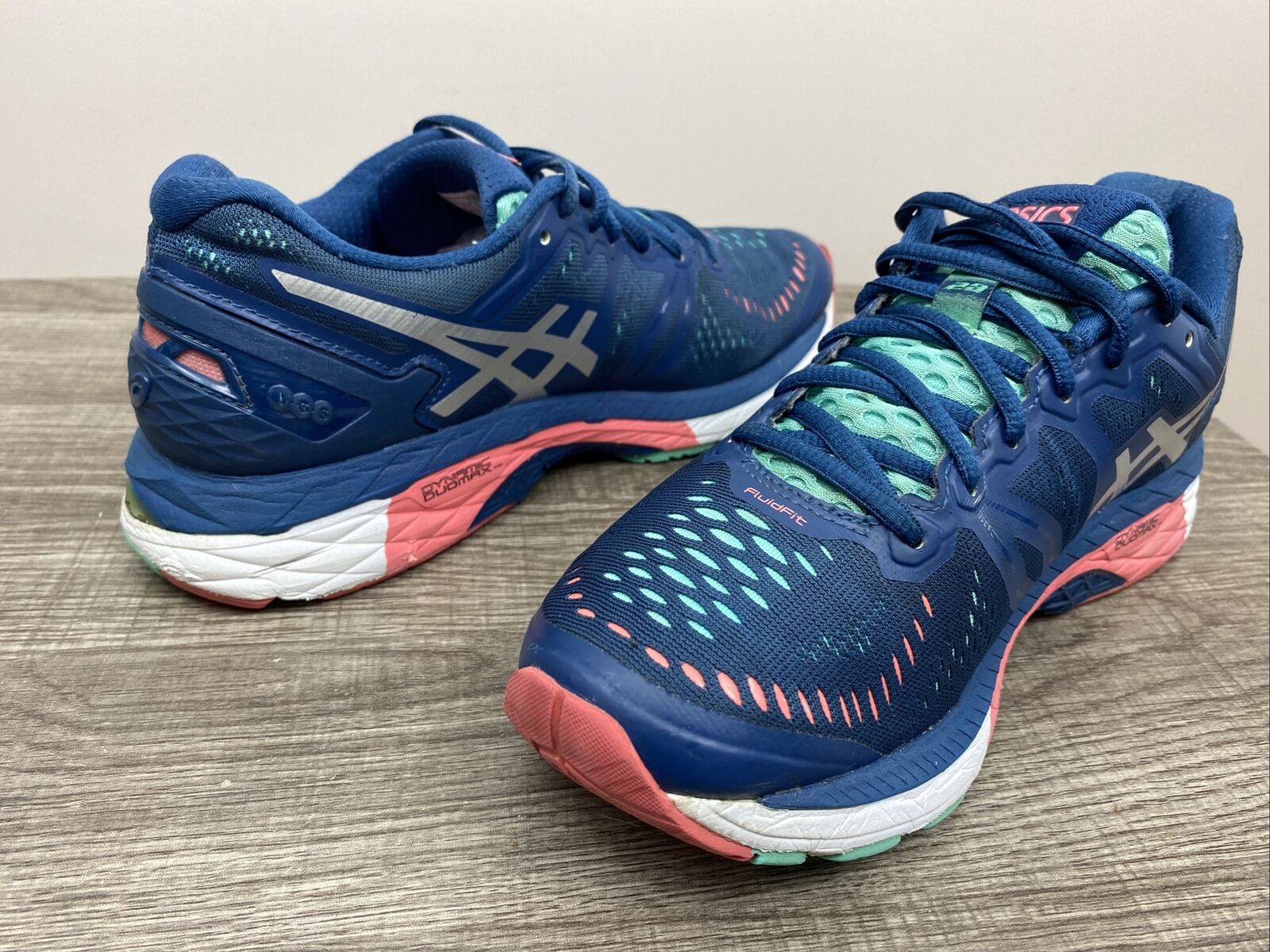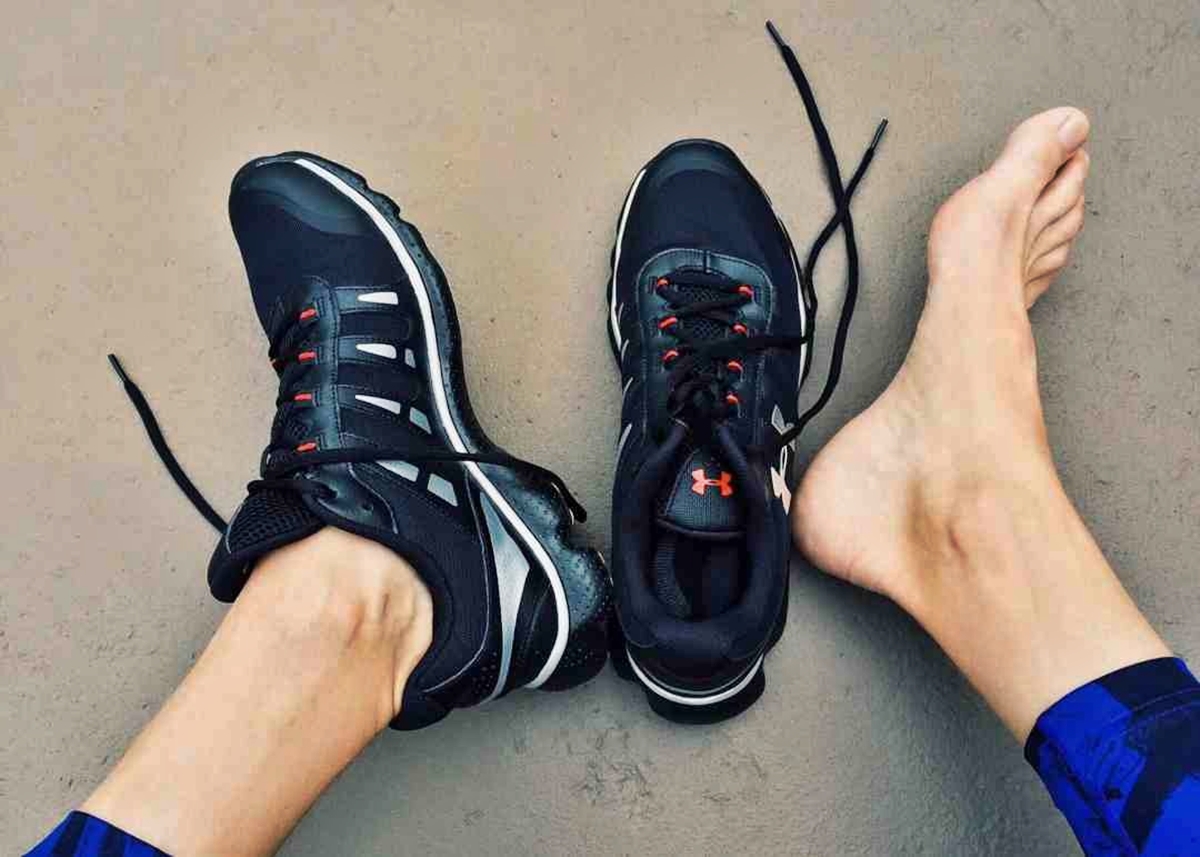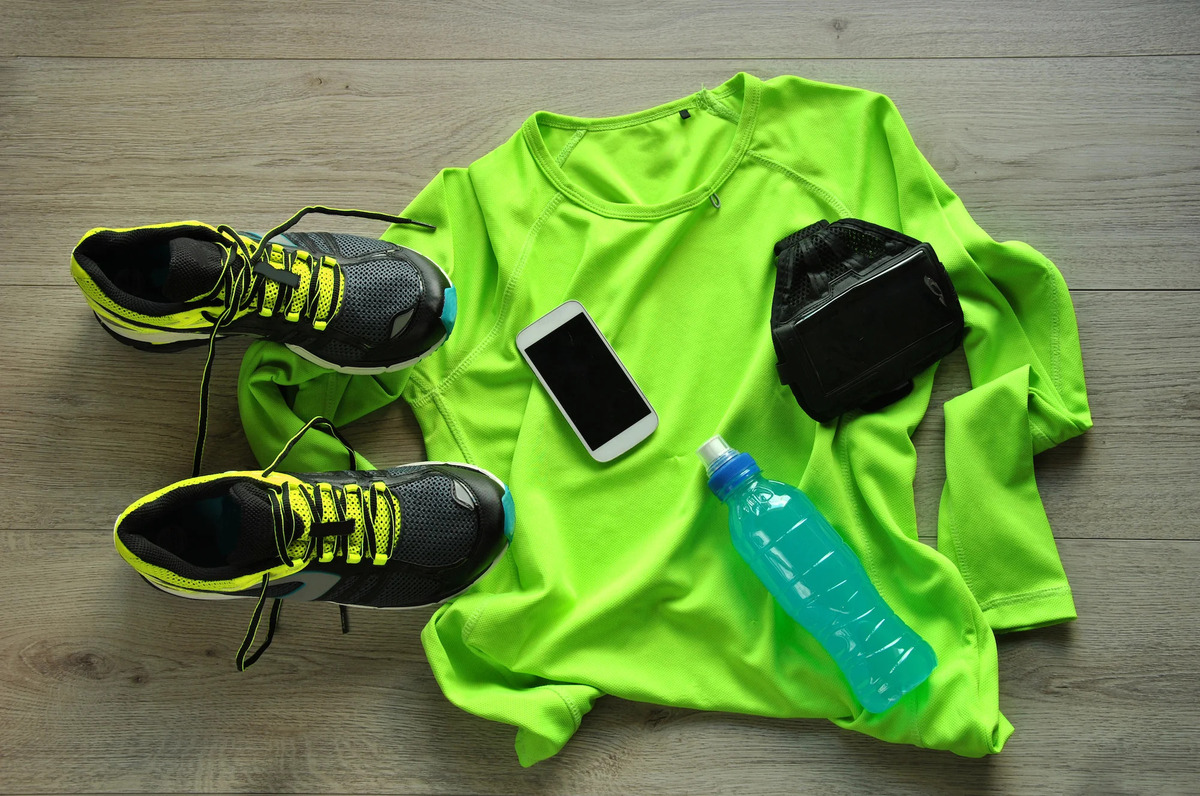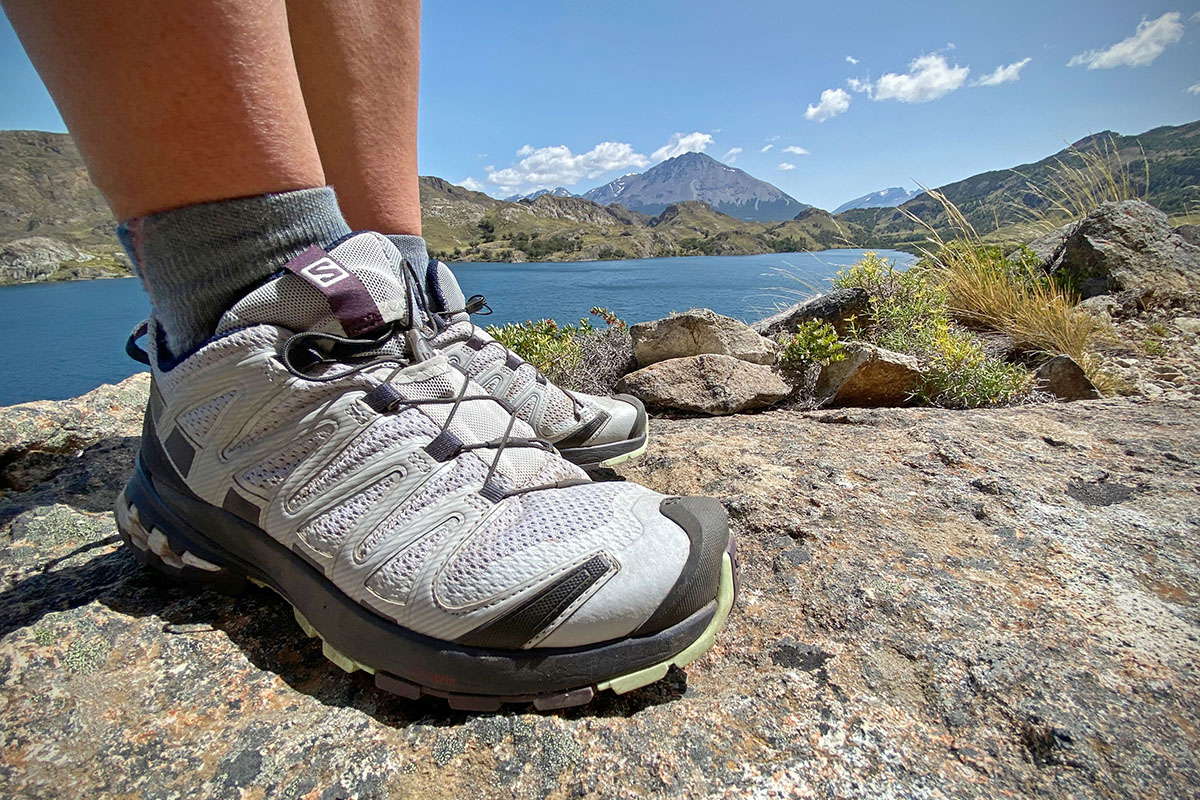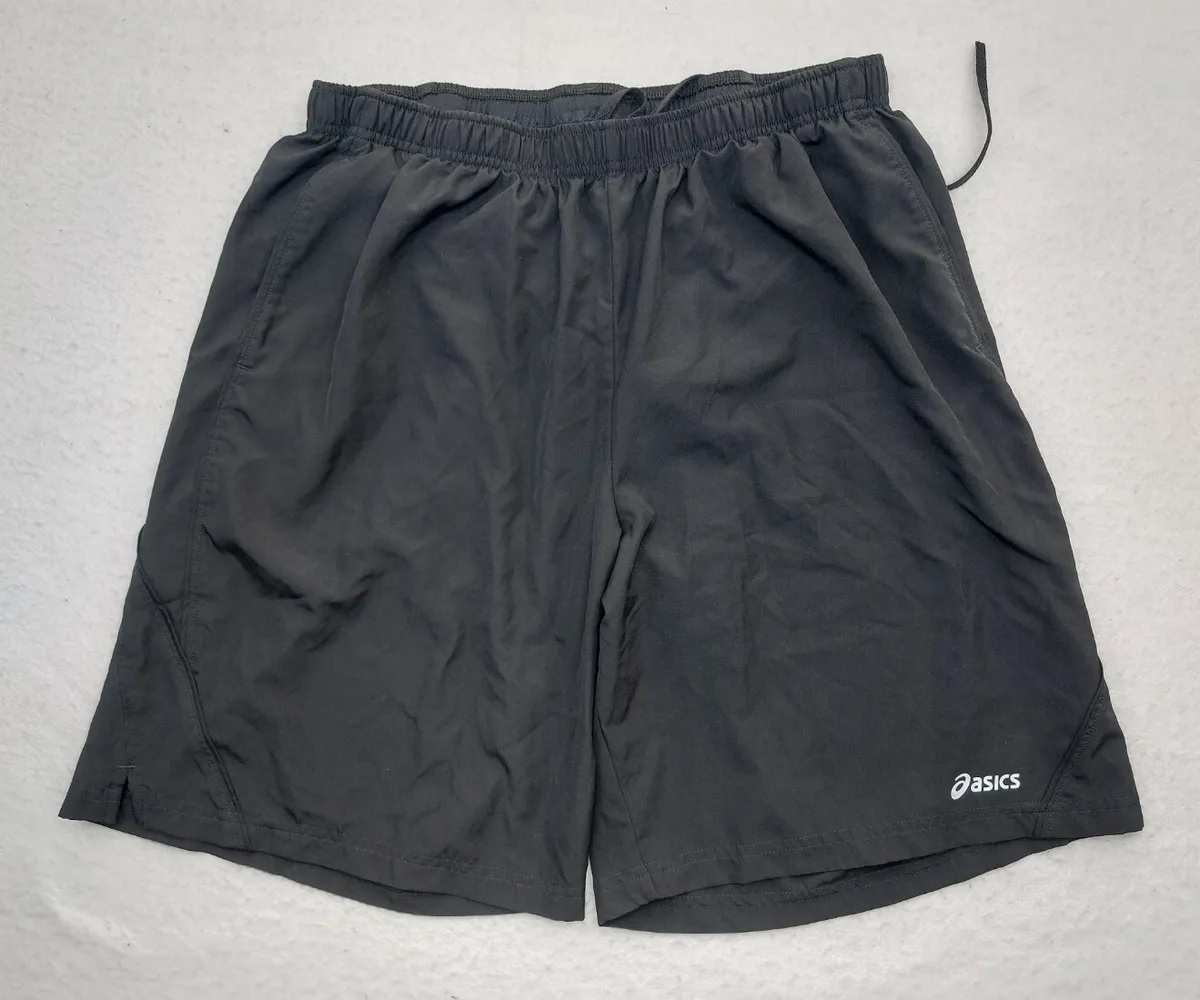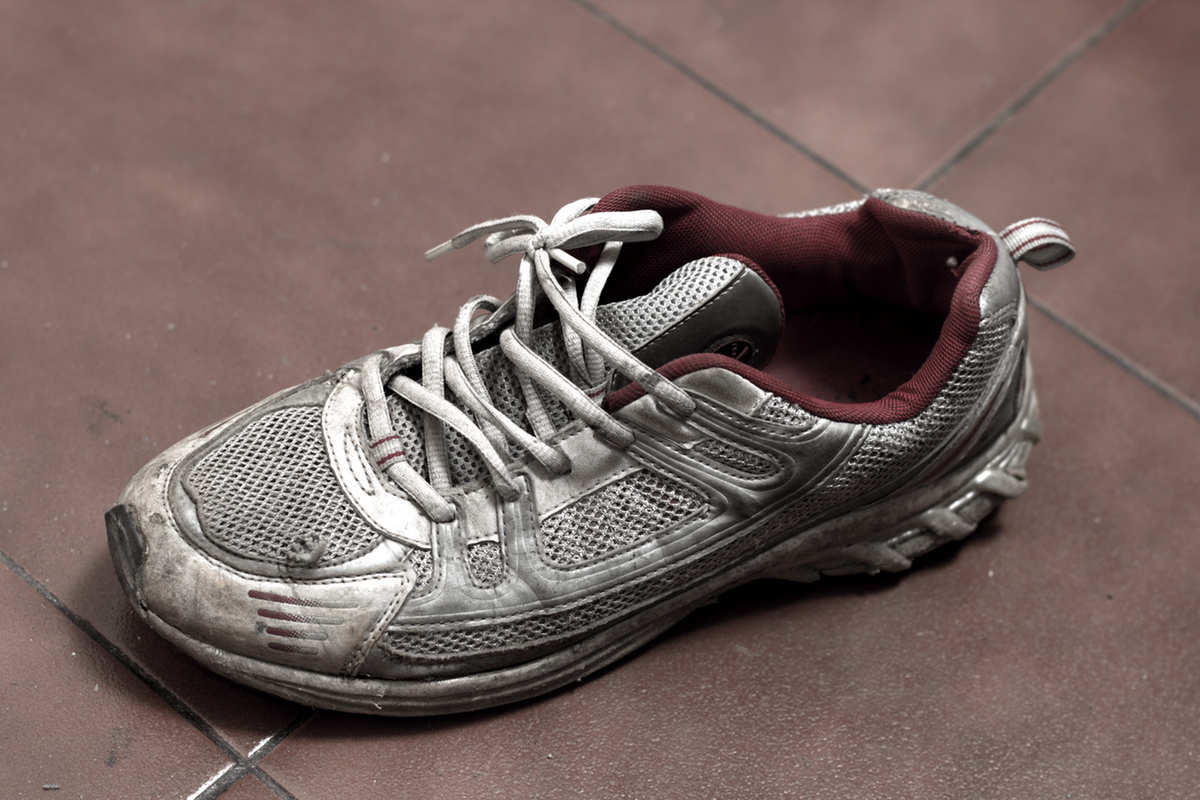Home>Misc>Featured>How Long Does It Take To Break In Running Shoes
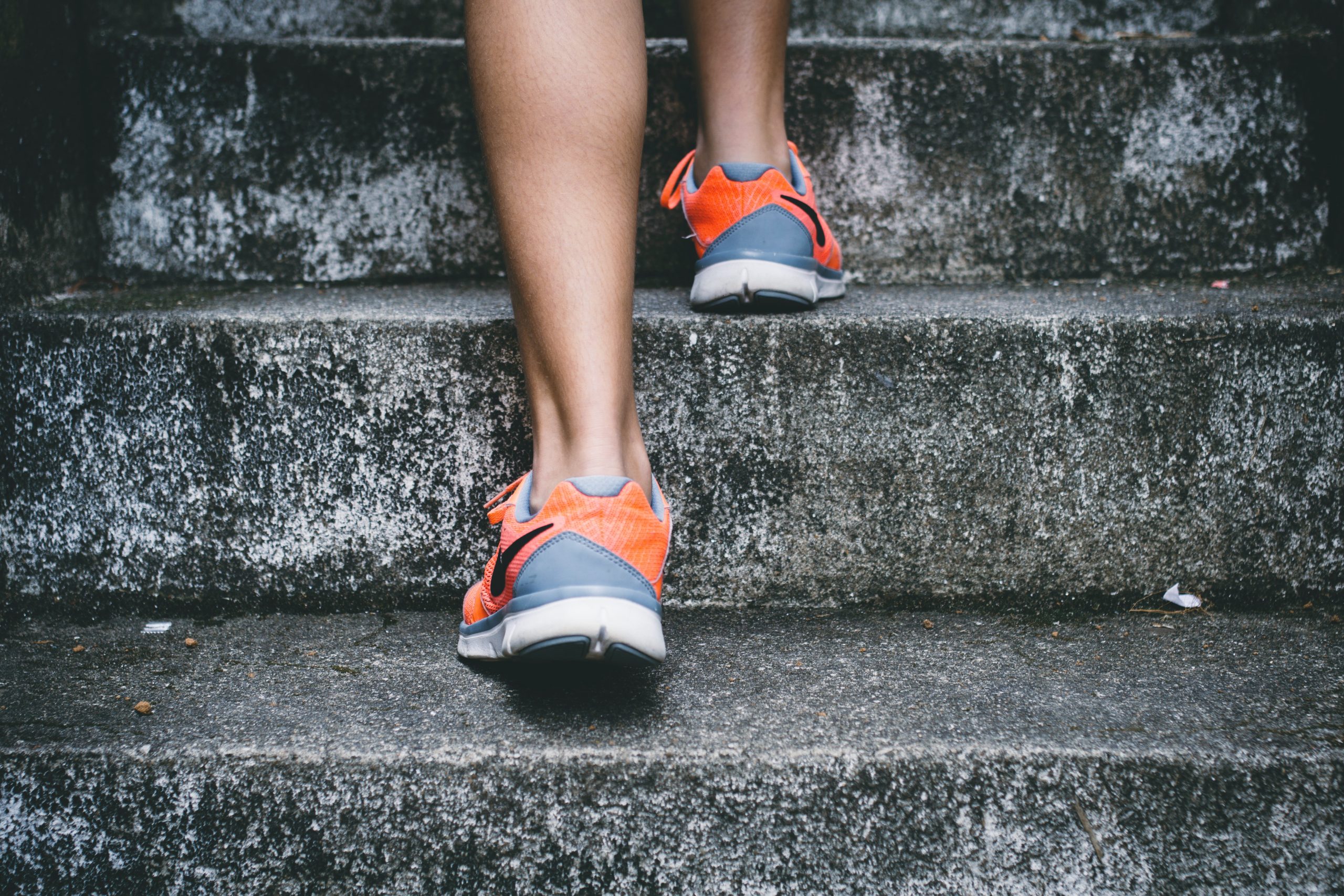

Featured
How Long Does It Take To Break In Running Shoes
Modified: May 22, 2024
Discover how long it takes to break in featured running shoes. Find out the optimum time frame for optimal comfort and performance.
Introduction
Breaking in a new pair of running shoes is an essential step for any runner. We all know how exhilarating it feels to slip on a fresh pair of kicks and hit the pavement. However, the question that often lingers in our minds is, “How long does it take to break in running shoes?” The answer, unfortunately, is not a straightforward one. The break-in period can vary based on several factors, including shoe material and construction, cushioning and support, foot type and running style, as well as the frequency and duration of use.
Understanding these factors can help runners better anticipate and manage the break-in process, ensuring maximum comfort and performance in their running shoes. In this article, we will delve into these variables and offer tips on how to break in your new running shoes effectively.
Factors That Impact Shoe Break-In Time
1. Shoe Material and Construction: The material and construction of a shoe can significantly impact its break-in time. Shoes made of synthetic materials tend to be more flexible and require less time to break in compared to those made of rigid leather. Additionally, shoes with seamless uppers and flexible soles tend to conform to the foot more quickly.
2. Cushioning and Support: The level of cushioning and support in a running shoe can also affect the break-in period. Shoes with ample cushioning and support might require more time to adapt to the shape of your foot and running gait.
3. Foot Type and Running Style: Each runner has a unique foot type and running style. Factors such as high arches, flat feet, or overpronation can influence how a shoe breaks in and adjusts to the specific needs of the runner.
4. Frequency and Duration of Use: The more frequently you wear your new running shoes and the longer your runs, the quicker the break-in process will be. Consistent use allows the shoes to gradually mold to your feet, enhancing comfort and reducing any potential discomfort.
Understanding these factors and their impact on the break-in period can help runners gauge how long it might take for their new shoes to reach optimal comfort. However, it’s important to note that every individual and their running routine are unique, so personal experiences may vary.
Factors That Impact Shoe Break-In Time
When it comes to the break-in time of running shoes, several factors can influence how quickly or gradually they conform to your feet. Understanding these factors can help you manage your expectations and make the most of your new pair of kicks.
1. Shoe Material and Construction: The material and construction of a running shoe can have a significant impact on its break-in time. Generally, shoes made of synthetic materials tend to be more flexible and require less time to break in compared to those made of rigid leather. Additionally, shoes with seamless uppers and flexible soles tend to conform to the foot more quickly, providing a comfortable fit from the start.
2. Cushioning and Support: The level of cushioning and support in a running shoe can also affect the break-in period. Shoes with ample cushioning and support might require more time to adapt to the shape of your foot and running gait. The foam and other cushioning materials need to soften and mold to your feet over time for optimal comfort and protection.
3. Foot Type and Running Style: Every runner has a unique foot type and running style, and these factors can also impact how a shoe breaks in. For example, individuals with high arches or flat feet may find that they need more time for their shoes to adjust and provide the necessary support. Furthermore, the way you run, whether you have a neutral stride or tend to overpronate, can influence the break-in process as well. Shoes designed specifically for your foot type or running style might require additional time to adapt properly.
4. Frequency and Duration of Use: The frequency and duration of use play a crucial role in how quickly running shoes break in. Logically, the more often you wear your new shoes and the longer your runs, the quicker the break-in process will be. Using them consistently allows the materials to gradually mold to the shape of your feet, resulting in enhanced comfort and a customized fit.
It’s important to keep in mind that these factors are not always set in stone and can vary from one shoe to another. Additionally, individual experiences may differ based on personal preferences and body mechanics. Some runners might find that their shoes feel comfortable right out of the box, while others might require a longer break-in period.
By understanding these factors, you can better anticipate how long it might take for your running shoes to reach optimal comfort. Remember, patience is key when it comes to breaking in new shoes. It’s worth spending the time and effort to ensure that your shoes provide the support and comfort you need for a successful and enjoyable running experience.
Shoe Material and Construction
The material and construction of running shoes play a crucial role in determining the break-in time. Different materials offer varying levels of flexibility and durability, which can affect how quickly the shoes conform to your feet. Here are some factors to consider:
1. Synthetic Materials: Running shoes made from synthetic materials, such as mesh or knit uppers, are known for their breathability and flexibility. These materials tend to be more forgiving and require less time to break in compared to shoes made of stiffer materials like leather or suede. The flexibility of synthetic materials allows for better foot movement, reducing the chances of discomfort during the break-in period.
2. Leather and Suede: Shoes with leather or suede uppers often require a longer break-in period. The natural stiffness of these materials can cause initial discomfort, especially in areas where the shoe might rub against your feet. However, with time and regular use, leather and suede gradually soften and conform to the shape of your feet. Once broken in, leather shoes can provide excellent support and durability.
3. Construction: The way a shoe is constructed can also impact the break-in time. Shoes with seamless uppers or minimal stitching tend to be more comfortable from the start, as they eliminate potential pressure points or areas of irritation. Additionally, shoes with flexible soles allow for greater natural movement and adaptability, reducing the break-in period by allowing the shoe to conform to your foot more easily.
Depending on the material and construction of your running shoes, the break-in time can vary. It’s important to remember that there is no set timeframe for breaking in shoes. Some shoes may feel comfortable right out of the box, while others may require a few runs or walks before they start to mold to your feet. It’s crucial to listen to your body and allow yourself time to adjust to the shoes.
When breaking in running shoes, it’s recommended to start with shorter runs or walks to allow your feet to gradually adapt to the shoe’s fit. This can help prevent potential blisters or discomfort that may arise from overuse during the break-in period. Additionally, wearing moisture-wicking socks can enhance comfort and reduce the risk of friction-related issues.
Remember, each person’s experience with breaking in shoes can differ, so be patient and listen to your body. As the materials of your running shoes become more flexible and mold to your feet, you’ll enjoy the optimal comfort and support they are designed to provide.
Cushioning and Support
The level of cushioning and support in running shoes can significantly impact the break-in period. These features affect not only the initial comfort of the shoes but also their ability to adapt and provide the necessary protection during your runs. Here are key factors to consider:
1. Foam Technology: Running shoes often utilize various foam technologies to provide cushioning and support. The type and density of foam used can influence the break-in time. Shoes with softer or less dense foams may feel comfortable right away, as they can conform to your feet quickly. However, they may also wear out more rapidly. Shoes with firmer foam may require a longer break-in period but can provide long-lasting support.
2. Arch Support and Stability Features: The presence of arch support and stability features in running shoes can impact the break-in time, especially for individuals with specific foot conditions. Shoes with built-in arch support or stability mechanisms might initially feel rigid, as they provide targeted support to areas that need it. However, over time, the shoes will mold to your feet, providing a customized fit and the necessary stability for your running style.
3. Midsole and Outsole Configuration: The configuration of the midsole and outsole also affects the break-in time. Shoes with thicker midsoles or more aggressive tread patterns may feel stiffer initially due to the increased cushioning and traction. However, as you wear the shoes and put mileage on them, the materials will become more flexible and adapt to your feet, enhancing comfort and responsiveness.
When breaking in running shoes with cushioning and support, it’s essential to gradually acclimate your feet to the shoes. Begin with shorter runs or walks to allow your body to adjust to the shoes’ characteristics. Increase your mileage gradually to prevent potential discomfort or injury. Additionally, paying attention to any discomfort or pain in specific areas can indicate that the shoes may not be providing adequate support, and it might require reassessment or a different model.
Regular maintenance and care for the cushioning and support features of your running shoes are crucial to ensuring their longevity and performance throughout the break-in process and beyond. Follow the manufacturer’s guidelines for cleaning and replacing your shoes, as worn-out cushioning can impact the shoe’s ability to support your feet properly.
Remember, everyone’s feet are unique, and individuals may have different preferences when it comes to cushioning and support. Take the time to find the right balance that suits your running style and comfort needs. By allowing the shoes to gradually adapt to your feet, you’ll ensure long-lasting comfort and reliable support on your running journey.
Foot Type and Running Style
Every runner has a unique foot type and running style, and these factors can significantly impact the break-in time of running shoes. Understanding your foot type and running mechanics can help you select the right shoes and manage your expectations during the break-in process. Here are some key considerations:
1. Foot Type: Foot types can be classified as high arches, flat feet, or neutral arches. Each foot type has different support and cushioning needs. If you have high arches, you may require shoes with extra cushioning to absorb shock effectively. On the other hand, flat-footed runners might benefit from shoes with additional stability and arch support. Understanding your foot type can help you select the appropriate shoes that address your specific needs, although this might result in a longer break-in period as the shoes adjust to your foot structure.
2. Pronation: Pronation refers to the natural inward rolling motion of the foot during the running gait cycle. Runners may have a neutral stride, underpronation (supination), or overpronation. Shoes designed for different pronation patterns typically come with specific features to provide support and stability. Opting for shoes that align with your pronation type can enhance comfort and performance, but it may necessitate a longer break-in period as the shoes adapt to your unique movement patterns.
3. Running Style: Your running style, including factors like stride length and running pace, can impact how your shoes break in. For instance, runners with a heavy heel strike may find that the heel area of their shoes requires more time to soften and mold to their feet. Similarly, runners with a midfoot or forefoot strike may notice that the toe box area takes longer to adapt. Understanding your running style can help you anticipate any potential discomfort during the break-in process and adjust your running mechanics accordingly.
It’s important to note that not all running shoes cater specifically to different foot types and running styles. However, certain shoe models may provide extra cushioning, stability, or support that can align better with your unique needs. Consulting with a professional shoe fitter or podiatrist can also help you identify the right shoes for your foot type and running style.
During the break-in period, it’s crucial to listen to your body and pay attention to any discomfort or pain. While some initial stiffness or tightness is normal, excessive discomfort or pain could indicate that the shoes are not suitable for your foot type or running mechanics. In such cases, reevaluating your shoe selection may be necessary.
Remember that finding the right shoes for your foot type and running style is an ongoing process, and it may take some trial and error. By understanding your unique foot characteristics and running mechanics, you can make informed decisions and find shoes that not only provide the necessary support but also ensure comfort and performance during your runs.
Frequency and Duration of Use
The frequency and duration of use can have a significant impact on how quickly your running shoes break in. Regular and consistent use allows the shoes to gradually conform to the shape of your feet and provide optimal comfort and support. Here are some factors to consider:
1. Regular Use: The more frequently you wear your new running shoes, the quicker the break-in process will be. Wearing them consistently allows the materials to flex and mold to your feet, reducing any initial stiffness or discomfort. Aim to wear your new shoes for shorter periods initially, gradually increasing the duration as your feet become accustomed to them.
2. Duration of Use: The duration of each run or walk also plays a role in the break-in process. If possible, start with shorter runs or walks to allow your feet and the shoes to gradually adapt. As you build up mileage, your shoes will mold to your feet, providing a customized fit and enhanced comfort. Gradually increasing the duration of your runs can help prevent potential discomfort or issues that may arise from overuse during the break-in period.
3. Terrain and Surface: The terrain and surface on which you run or walk can affect the break-in time of your shoes. Running on softer surfaces like grass or padded tracks can minimize the impact and stress on the shoe materials, allowing them to mold and adapt more quickly. On the other hand, running on harder surfaces like concrete or asphalt may require a longer break-in period due to the increased resistance and impact forces.
4. Multiple Shoes in Rotation: Rotating multiple pairs of running shoes can prolong their overall lifespan and potentially reduce the break-in period. By alternating between different pairs, each shoe gets more time to recover and regain its cushioning and support properties. Additionally, rotating shoes can provide a variation in support and cushioning, which may help prevent muscle fatigue and reduce the risk of injury.
While it’s important to use your new running shoes regularly, it’s equally important to listen to your body and pay attention to any discomfort or pain. Pushing through excessive pain or discomfort during the break-in process can potentially lead to injuries. If you experience persistent discomfort or pain that does not subside after a reasonable break-in period, it may be necessary to reevaluate the shoes’ fit, size, or suitability for your feet.
The break-in period can vary based on personal factors and shoe characteristics. Some runners may find that their shoes feel comfortable within a few runs, while others may require more time to fully break in. Be patient, give your shoes adequate time to adapt to your feet, and prioritize your comfort and well-being during the process.
Remember, running shoes are not one-size-fits-all, and finding the right pair that works best for your individual needs may take some trial and error. By gradually increasing your mileage, listening to your body, and using your shoes regularly, you’ll optimize the break-in process and enjoy the long-term benefits of a well-fitting and comfortable pair of running shoes.
Signs That Your Running Shoes Need Breaking In
While breaking in new running shoes is a natural part of the process, it’s essential to recognize the signs that indicate your shoes need to be properly broken in. Here are some common signs to look out for:
1. Initial Stiffness: New running shoes often feel stiff when you first put them on. This stiffness is normal and can be attributed to the materials and construction. However, if the shoes feel extremely rigid or uncomfortable, it may indicate that they need more time to break in and adapt to your feet.
2. Tightness or Pressure Points: During the initial wears, you may experience tightness or pressure points in specific areas of your feet. This is because the shoes have not yet molded to the unique shape of your feet. If the tightness persists or causes discomfort after a few runs, it’s a sign that the shoes need more breaking in or may not be the right fit for your foot shape.
3. Blisters or Hot Spots: Blisters or hot spots can occur when friction and rubbing between your feet and the shoes are not adequately minimized. Some initial discomfort is normal, but if you consistently develop blisters or hot spots during your runs, it’s an indication that your shoes may not be broken in properly or that they do not fit you properly.
4. Lack of Cushioning or Support: If your new running shoes feel like they are lacking the necessary cushioning or support, it may be a sign that they require more breaking in. Over time, the foam and materials will adjust to your feet, providing the intended level of cushioning and support. However, if the lack of cushioning or support persists after several runs, it may indicate that the shoes are not suitable for your needs.
5. Discomfort or Pain: While it’s normal to experience some discomfort during the break-in period, persistent pain or discomfort is a sign that your shoes may not be the right fit for your feet. If you consistently experience sharp pain, excessive soreness, or discomfort that worsens with each run, it’s crucial to reassess your shoe choice and consider getting fitted for a different pair.
It’s important to remember that everyone’s feet and experiences vary, and the break-in period can be different for each individual. However, if you notice any of the aforementioned signs persisting or worsening over time, it’s important to address them to prevent potential injury or long-term discomfort.
Give your shoes an adequate amount of time to break in and adapt to your feet. It’s recommended to gradually increase the mileage and duration of your runs to allow the shoes to properly conform to your feet. If discomfort or fit issues persist after following these steps, it might be worth seeking advice from a professional shoe fitter or podiatrist to ensure you have the right shoes for your needs.
Ultimately, paying attention to your body and being proactive in addressing any signs of discomfort or pain will help you find the perfect balance between breaking in your shoes and ensuring a comfortable and enjoyable running experience.
Tips for Breaking In New Running Shoes
Breaking in new running shoes is crucial for achieving optimal comfort and performance. While the process may take some time, there are several tips and techniques that can help expedite the break-in period. Here are some key tips to consider:
1. Gradually Increase Mileage: Start by wearing your new running shoes for shorter runs or walks and gradually increase the mileage over time. This allows your feet and the shoes to adapt gradually, reducing the risk of discomfort or injury during the break-in process. Avoid jumping into long-distance runs right away, as this can put excessive strain on your feet and the shoes.
2. Wear Them Around the House: Before taking your new running shoes out on the road, wear them around the house for short periods. This allows your feet to acclimate to the shoes in a controlled environment and helps identify any potential fit or comfort issues early on. Additionally, wearing them at home can help loosen up the materials and make them more pliable before hitting the pavement.
3. Use Them for Short Runs: Incorporate your new running shoes gradually into your training routine by using them for shorter runs initially. This allows you to gauge their comfort and performance without putting excessive stress on your feet. As you gradually increase your mileage, you’ll give your shoes ample time to conform to your foot shape and running mechanics.
4. Stretching and Flexing the Shoes: To help speed up the break-in process, manually stretch and flex the shoes with your hands before wearing them. Gently twist and flex the shoe to loosen up the materials, especially around the areas that feel tighter or stiffer initially. Be careful not to overstretch or damage the shoe in the process.
5. Listen to Your Body’s Signals: Pay attention to any discomfort or pain in your feet or lower limbs during the break-in period. Your body will often signal if the shoes are not the right fit or if they need more time to break in properly. If you experience persisting pain, soreness, or blisters, don’t hesitate to reassess the fit or seek advice from a professional shoe fitter.
6. Replace Old Insoles: If your new running shoes come with removable insoles, consider replacing them with custom or aftermarket insoles that provide better cushioning or support. This can help enhance the overall comfort and fit of the shoes, easing the break-in process and reducing potential discomfort during runs.
7. Be patient: Breaking in running shoes takes time, and it’s essential to be patient throughout the process. Keep in mind that each person’s experience may vary, and finding the right fit and comfort level may require some trial and error. Avoid rushing the break-in period and allow your shoes to gradually adapt to your feet for the best long-term results.
Remember, breaking in running shoes is a personal journey. While these tips can help expedite the process, it’s important to listen to your body and prioritize comfort and fit. By gradually increasing mileage, wearing them around the house, and being patient, you’ll ultimately enjoy the full potential of your new running shoes.
Gradually Increasing Mileage
One of the most important aspects of breaking in new running shoes is to gradually increase the mileage over time. This allows your feet and the shoes to adapt and adjust gradually, minimizing the risk of discomfort or injury. Here are some key points to consider when gradually increasing your mileage:
1. Start with Short Runs: When you first get your new running shoes, start by wearing them for shorter runs. This allows your feet to get used to the shoes and gives the shoes an opportunity to mold to your foot shape. By starting with shorter runs, you can gauge the comfort level of the shoes and identify any potential areas of discomfort that may need to be addressed.
2. Increase Mileage Slightly Each Week: As you continue wearing your new running shoes, gradually increase the mileage by small increments each week. For example, you can start by adding half a mile to your usual running distance, and then increase it gradually over the course of a few weeks. This gradual progression allows your feet and the shoes to adjust to the increased distance without putting excessive strain on your muscles and joints.
3. Listen to Your Body: It’s crucial to listen to your body during the break-in process. Pay attention to any discomfort or pain, as this could be a signal that you are pushing yourself too hard or that the shoes may not be the right fit. If you experience persistent or worsening pain, it’s important to reassess your running shoes and potentially seek advice from a professional shoe fitter or podiatrist.
4. Give Your Feet Time to Rest: Along with gradually increasing mileage, it’s essential to give your feet sufficient rest and recovery time. This allows your muscles and tissues to adapt to the demands of running in new shoes. Incorporating rest days into your training schedule is important for injury prevention and overall performance.
5. Be Patient: Breaking in running shoes takes time, and it’s important to be patient throughout the process. Avoid the temptation to increase mileage too quickly, as this can lead to discomfort or potential injuries. Trust the process and give your shoes and feet the time they need to adjust and find their optimal comfort level.
6. Consider Rotating Shoes: If you have multiple pairs of running shoes, consider rotating them during the break-in period. This can help extend the overall lifespan of your shoes and give each pair more time to recover and regain their cushioning properties. Rotating shoes can also provide variation in support and cushioning, reducing the strain on specific areas and potentially enhancing comfort during the break-in process.
Remember that breaking in new running shoes is a gradual process. By gradually increasing mileage, listening to your body, and giving your feet adequate rest, you can ensure a smoother transition and a more comfortable running experience in your new shoes. Stay consistent with your training, be patient, and ultimately, you’ll find that your shoes will adapt to your feet, providing the comfort and support you need for your runs.
Wearing Them Around the House
One effective way to break in new running shoes is by wearing them around the house before taking them out for a run. This allows your feet to get accustomed to the shoes in a controlled environment and helps identify any potential fit or comfort issues early on. Here’s why wearing your running shoes around the house can be beneficial:
1. Identify Fit Issues: Wearing your new running shoes at home allows you to assess the fit more closely. Walk around on different surfaces, climb stairs, and perform basic movements to ensure that the shoes provide the support and comfort you need. Pay attention to any areas of discomfort or pressure points that may arise. If you notice any fit issues, such as tightness or rubbing, it’s important to address them early on.
2. Loosen Up the Materials: New running shoes can sometimes feel stiff, and wearing them at home helps to loosen up the materials. As you move and flex your feet, the shoes gradually adapt to the shape of your feet and become more pliable. This can help reduce the break-in period and make the shoes more comfortable when you start running in them.
3. Test the Cushioning and Support: Walking around the house in your new running shoes allows you to assess the level of cushioning and support provided. Pay attention to how the shoes absorb impact and the level of comfort they offer during various movements. This can give you an initial indication of whether the shoes provide the right amount of cushioning and support for your needs.
4. Address Minor Fit Adjustments: During your time wearing the shoes at home, you may notice minor fit issues that can be easily addressed. For example, if you feel your toes are too close to the end of the shoe, you may need to adjust the lacing technique or consider a different size. Making these small adjustments early on can help prevent discomfort and potential injuries during your runs.
5. Get Accustomed to the Shoe Feel: Each pair of running shoes has a unique feel, and wearing them at home allows you to get accustomed to their particular characteristics. This can include the weight, flexibility, and overall sensation of the shoes on your feet. By getting a sense of how they feel in a controlled environment, you’ll be better prepared when you start running in them.
Remember, wearing your running shoes around the house should not replace actual running or walking in them. It is still important to gradually increase mileage and allow your feet to adapt to the shoes in a more dynamic environment. However, wearing them at home can serve as an initial step to assess the fit, comfort, and overall feel of the shoes before hitting the roads or trails.
If you encounter any significant discomfort or fit issues during this process, it may be necessary to reassess your shoe choice and consider consulting with a professional shoe fitter. Ultimately, by wearing your running shoes around the house, you can address minor fit adjustments, get accustomed to the shoe feel, and ensure a more comfortable running experience once you hit the pavement.
Using Them for Short Runs
As you continue to break in your new running shoes, incorporating them into your training routine with short runs can be highly beneficial. This gradual approach allows your feet and the shoes to adapt to each other, reducing the risk of discomfort and ensuring a smoother transition. Here are the key reasons why using your new running shoes for short runs is important:
1. Evaluate Initial Comfort: Short runs provide an opportunity to evaluate the initial comfort of your new running shoes. By wearing them for shorter distances, you can assess how well the shoes fit your feet and whether there are any areas of discomfort or pressure points. If you experience any noticeable discomfort, it’s important to identify the cause and make any necessary adjustments before increasing mileage.
2. Gradual Adaptation: Short runs allow for a gradual adaptation period, particularly if your new shoes have a different fit or cushioning compared to your previous pair. By easing into shorter runs, your feet and the shoes can adjust gradually, reducing the risk of developing blisters or other potential issues that can arise from longer or more intense runs. This gradual adaptation also helps your muscles and tendons adjust to the new support and cushioning provided by the shoes.
3. Identification of Fit Issues: Using the shoes for short runs allows you to identify any fit issues that may not have been apparent during shorter activities or walks. Running puts additional stress on your feet and can exacerbate fit problems such as slippage, rubbing, or inadequate support. If you notice any persistent fit issues during your short runs, consider adjusting the lacing technique, trying different socks, or exploring alternative shoe models that better suit your foot shape and running style.
4. Assess Performance and Responsiveness: Short runs provide an opportunity to assess the shoes’ performance and responsiveness on the road or trail. You can get a sense of how the shoes handle different surfaces and how well they respond to your running technique. This evaluation is especially important if you have specific performance goals or if your new shoes have unique features that can enhance your running experience.
5. Gradually Increase Distance: Starting with short runs allows for a gradual increase in distance over time. As your new shoes continue to break in and become more comfortable, you can gradually increase the mileage. This approach allows your feet and muscles to adapt and strengthens them gradually, reducing the potential risk of overuse injuries that can occur by jumping into longer distances too quickly.
Remember, using your new running shoes for short runs is not only about breaking in the shoes, but also about ensuring your feet and body adapt to them gradually. Listen to your body and pay attention to any discomfort or issues that arise during these initial runs. If you experience persistent pain, it may be necessary to re-evaluate the shoes’ fit or seek advice from a professional shoe fitter or healthcare provider.
By using your new running shoes for short runs, you can assess their comfort, address fit issues, and gradually adapt to the support and cushioning they provide. This approach sets the foundation for longer and more rewarding runs as you continue to break in your new shoes.
Stretching and Flexing the Shoes
When breaking in new running shoes, stretching and flexing them can help expedite the process and make them more comfortable on your feet. By manually manipulating the shoes, you can loosen up the materials and encourage them to adapt to the shape of your feet. Here are several reasons why stretching and flexing your shoes is beneficial:
1. Loosen Up Stiff Materials: New running shoes can often feel stiff and rigid, particularly in areas where the materials are less flexible. By stretching and flexing the shoes, you help loosen up these stiff areas, allowing the materials to become more pliable and mold to the shape of your feet. Focus on areas that feel tighter or stiffer, such as the toe box or heel counter.
2. Customize the Fit: Stretching and flexing the shoes can help customize the fit to your specific foot shape. It allows the shoes to adapt to any unique characteristics of your feet, such as bunions or high arches. By manipulating the materials, you can create a more comfortable and personalized fit, reducing the risk of pressure points or discomfort during your runs.
3. Reduce Break-In Period: The break-in period for new running shoes can sometimes be uncomfortable, especially if the shoes are particularly stiff. Stretching and flexing the shoes helps accelerate the break-in process by making the materials more supple. As a result, the shoes will gradually adapt to your feet more quickly, reducing any initial discomfort that may arise during the break-in period.
4. Prevent Blisters and Discomfort: Stretching and flexing the shoes can also help prevent blisters and discomfort by minimizing friction between your feet and the shoes. By manipulating the materials, you can alleviate any tight areas that may cause rubbing or irritation. This can be especially beneficial in the early stages of wearing your new running shoes, as it allows for a more comfortable running experience.
5. Increase Flexibility: By actively stretching and flexing your new running shoes, you enhance their overall flexibility. This increased flexibility translates into better natural foot movement during your runs, providing a more dynamic and responsive experience. Additionally, improved flexibility in the shoes can reduce the risk of injury by allowing your feet to move more naturally.
When stretching and flexing your running shoes, it’s important to do so gently and gradually. Avoid excessive force or stretching that could damage the shoes. Here are a few ways to stretch and flex your shoes effectively:
- Use your hands to gently flex the shoe back and forth, focusing on the toe box and the heel counter.
- Insert shoe stretchers or shoe trees to help expand the shoe gradually. This is particularly useful if you have specific areas that feel tight or uncomfortable.
- Wear the shoes with thick socks around the house to stretch and mold the materials to your feet. This can be especially helpful for breaking in shoes made of stiffer materials like leather.
- Consider using stretching sprays or techniques specifically designed for certain shoe materials, such as leather or suede, to aid in the stretching process.
By incorporating stretching and flexing into your routine, you can help expedite the break-in process of your new running shoes. This allows the shoes to conform to your feet more quickly, providing a more comfortable and customized fit. Remember to be patient and listen to your body throughout the break-in period, making adjustments as needed to ensure the best running experience possible.
Listening to Your Body’s Signals
When breaking in new running shoes, it’s important to listen to your body and pay attention to its signals. Your body is an excellent source of information and can guide you in determining whether your shoes are fitting properly or if adjustments need to be made. Here are key reasons why listening to your body’s signals is crucial during the break-in process:
1. Comfort and Discomfort: Your body can communicate comfort or discomfort through sensations in your feet, ankles, and legs. Pay attention to how your feet feel when you first put on your new running shoes and during your runs. Comfort is essential for an enjoyable running experience, while persistent discomfort or pain may indicate that the shoes are not properly broken in or do not fit properly. If discomfort persists or worsens, it’s wise to reassess your shoes and make necessary adjustments.
2. Hot Spots and Blisters: Hot spots and blisters are indicators of friction and rubbing between your feet and the shoes. If you notice recurring hot spots or blisters in specific areas, it may be a sign that the shoes need further breaking in or that adjustments are required, such as using different socks or altering the lacing technique. Addressing these issues promptly can prevent more severe discomfort and potential injuries.
3. Persistent Pain and Soreness: Persistent pain or soreness in your feet, ankles, or lower legs that doesn’t fade after the initial break-in period could be signs of a more significant issue. This may indicate that the shoes are not providing adequate support or that they are not suitable for your foot type or running mechanics. Consulting with a professional shoe fitter or healthcare provider can help you identify the root cause and find appropriate solutions.
4. Gait Changes: Pay attention to any changes in your running gait when you start wearing new shoes. If you notice alterations in your stride, such as compensating for discomfort or an unusual foot strike pattern, it may signal that the shoes are not providing the necessary support or that they are not the right fit for your feet. Consistent use of ill-fitting shoes can lead to overuse injuries and long-term damage.
5. Sensitivity to Specific Shoe Features: Your body might be sensitive to certain features of the shoe, such as the arch support, cushioning, or heel height. If you consistently experience discomfort or pain in specific areas, it’s important to identify which aspects of the shoe might be causing the issue. This can inform your choice in selecting future running shoes and help you find the perfect fit for your needs.
During the break-in period, it’s important to give your body time to adjust to the new shoes. Gradually increasing mileage, listening to your body, and making necessary modifications based on its signals will help you find the right balance between breaking in the shoes and ensuring a comfortable running experience. Remember, everyone’s feet are unique, and what works for others may not work for you, so it’s important to trust your body and make decisions that prioritize your comfort and well-being.
Conclusion
Breaking in new running shoes is an essential step in ensuring optimal comfort and performance. Understanding the various factors that impact the break-in time, such as shoe material and construction, cushioning and support, foot type and running style, as well as the frequency and duration of use, can help guide you through the process. By gradually increasing mileage, wearing them around the house, using them for short runs, stretching and flexing the shoes, and listening to your body’s signals, you can effectively break in your new running shoes while minimizing discomfort and the risk of injury.
Throughout the break-in period, it’s important to be patient and give your shoes and feet ample time to adapt. Pay attention to any signs of discomfort, hot spots, blisters, or persistent pain and make necessary adjustments, such as seeking professional advice or trying different techniques to improve the fit. Remember that breaking in running shoes is a personal journey, and what works for one person may not work for another, so it’s crucial to prioritize your own comfort and needs.
Once your running shoes are properly broken in, you’ll be rewarded with a comfortable and supportive pair of shoes that enhance your running experience. Enjoy the miles ahead with confidence, knowing that your shoes are perfectly tailored to your feet and running style.
